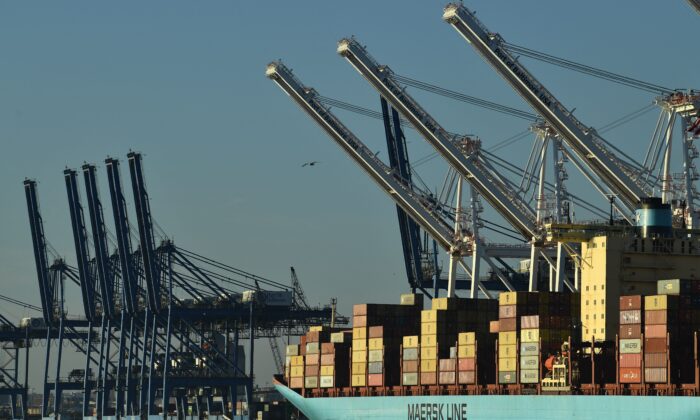Lawmakers raised concerns about security risks posed by China-made cranes.
Sen. Rick Scott (R-Fla.) and Rep. Carlos Giménez (R-Fla.) have asked the Biden administration for the progress on a report that addresses the national security risk posed by China-manufactured cranes at U.S. ports.
In a letter dated May 31 to Maritime Administration Administrator Rear Adm. Ann C. Phillips, the lawmakers raised concerns about communication equipment found in cranes manufactured by Chinese state-owned company Shanghai Zhenhua Heavy Industries Co. Ltd. (ZPMC) that have been installed at U.S. ports, citing a Wall Street Journal report.
“This surreptitiously installed communication equipment potentially jeopardizes critical U.S. infrastructure and presents a serious threat to national security,” the letter reads. “Safeguarding critical infrastructure from threats posed by foreign adversaries and securing the nation’s supply chains are of the utmost importance.”
The report, mandated by the Fiscal Year 2023 National Defense Authorization Act, was due to Congress in December 2023 but hasn’t been received as of May 31.
The letter from the Florida lawmakers followed the first congressional letter by two House committees about the same national security concerns over China-made cranes.
In February, the chairpersons of the House Committee on Homeland Security and the House Select Committee on the Chinese Communist Party (CCP) sent a letter to the president and chairman of ZPMC, demanding to know the purpose of the cellular modems discovered on crane components and in a U.S. seaport’s server room that houses firewall and networking equipment.
In the letter, Rep. Mark Green (R.-Tenn.) and then-Rep. Mike Gallagher (R-Wis.) said the committees discovered that many cranes at U.S. ports were built at ZPMC’s manufacturing facility, adjacent to a major shipyard where the CCP’s navy is building its third modern aircraft carrier and advanced warships and houses intelligence agencies.
After an eight-month joint investigation, the committees concluded that “ZPMC installed certain components onto the U.S.-bound STS cranes and onshore maritime infrastructure that are outside of any existing contract between ZPMC and U.S. maritime ports.”
They found that “these components do not appear in any way to contribute to the operation of the STS cranes or onshore infrastructure, raising significant questions as to their intended applications.”
U.S. Coast Guard Rear Adm. John Vann, who leads the Coast Guard’s Cyber Command, told reporters in February that more than 200 China-manufactured cranes were operating across U.S. ports and regulated facilities.
The discovery comes amid an ongoing congressional investigation into the operation of cranes manufactured in China and operating at U.S. ports.
In 2021, the FBI found intelligence-gathering equipment on a cargo ship delivering ZPMC cranes to the Baltimore port.
Retired Army Col. John Mills previously told The Epoch Times that the cranes are an extension of the CCP’s global cybercrime operation, which could be used during an invasion of Taiwan to sow chaos in the United States.
“Those container cranes are not cranes,” Col. Mills said. “They’re IP endpoints on a worldwide intelligence collection system.”
ZPMC, a subsidiary of the state-owned China Communications Construction Co., represents nearly 80 percent of the ship-to-shore (STS) cranes at U.S. maritime ports, according to The Wall Street Journal. The company says it controls 70 percent of the global STS crane market share.
In May 2023, Mr. Giménez proposed legislation titled the Port Crane Security and Inspection Act of 2023, which seeks to strengthen national port security by implementing thorough inspection procedures for port cranes, including those manufactured in foreign countries.
In February, President Joe Biden signed an executive order granting the Department of Homeland Security the authority to address maritime cyber threats. This includes implementing cybersecurity standards to secure the networks and systems of U.S. ports.
Earlier this year, FBI Director Christopher Wray said in a congressional hearing that a multiagency operation successfully removed Chinese malware embedded in critical infrastructure throughout the United States. He noted that the malware was designed to disrupt, degrade, and destroy U.S. infrastructure, likely in coordination with military actions if a conflict between the two nations were to occur.
“The Volt Typhoon malware allowed China to hide, among other things, pre-operational reconnaissance and network exploitation against critical infrastructure like our communications, energy, transportation, [and] water sectors,” Mr. Wray said.
Andrew Thornebrooke contributed to this report.

